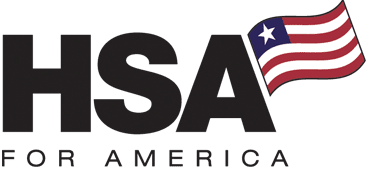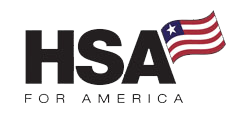
Employer HSA Contributions
When employees skip out on these plans, companies miss opportunities to foster loyalty, improve retention, and cut costs. However, what if a simple pre-tax contribution could change that? Research shows that employers who fund HSAs see up to a 15% jump in participation rates, creating a more engaged workforce and a healthier bottom line.
In this blog, we’ll uncover how this strategy can transform your benefits package and your company culture.
The Impact of Employer HSA Contributions on Participation
As of June 2024, HSAs held nearly $137 billion in assets across more than 37 million accounts in the United States, according to HealthEquity.
The true power of HSAs lies in employee participation. Their research found that companies offering either an HSA seed contribution (an initial employer-funded deposit) or an HSA match program saw an 11% increase in participation.
However, businesses that combined both strategies experienced a 15% jump in enrollment.
The numbers are clear, employer contributions—whether seeding, matching, or both—create tangible benefits by increasing plan participation.
HSA Participation Boost by Contribution Type
| Contribution Type | Participation Increase |
|---|---|
| Seed Contribution Only | 11% |
| Matching Contribution Only | 11% |
| Both Seed + Match | 15% |
Compare Pricing on the Best Insurance Plans Available
Benefits of Higher Employer HSA Contributions
1. Cost Savings for Employers
Employees who participate in HSAs reduce their taxable income.
As a result, this saves employers an average of 2% on payroll taxes for each HSA enrollee, according to the Kaiser Family Foundation.
However, there’s another indirect layer of cost savings with HSAs: When employees spend their own money, via HSAs, on healthcare expenses, they are more likely to shop around and find the best possible value for their money.
This means that overall utilization costs will drop. Consequently, since health insurance premiums are ultimately based on your group’s claims experience, reduced utilization costs eventually show up as lower insurance premiums.
This means improved competitiveness and profitability for your company.
2. Improved Employee Retention and Satisfaction
Employees value benefits that provide real financial and health security.
Contributing to HSAs not only supports employees’ immediate medical needs but also builds long-term savings for future healthcare expenses, including retirement. Moreover, this fosters loyalty and satisfaction, particularly for employees with high out-of-pocket costs.
PULLOUT:
- $706: The average HSA industry level account data (for those making contributions)
- $1,192: The average employee contribution to HSAs (for those making contributions)
- $1,705: The average annual deductible for employee high deductible health plans (2023)
Learn More: How Much Can an HSA Save in Taxes?
Choosing the Right Employer HSA Contribution Strategy
There are two proven ways employers can contribute to employee HSAs: Seed contributions and matching contributions.
Let’s take a closer look at each of them:
1. Seed Contributions
Seed contributions involve depositing a set amount into each employee’s HSA at the start of the year or upon enrollment.
This approach:
- Encourages all employees, regardless of income, to participate, promoting benefits equity.
- Offers immediate financial relief, reducing employees’ initial cost burden.
- Drives long-term retention of HSA savings and investments.
2. Matching Employer HSA Contributions
Similar to a 401(k) match, this approach involves employers matching employees’ HSA contributions – usually up to a certain limit.
While this strategy encourages employees to save more, it relies on employees’ financial ability to contribute first. Therefore, it’s most effective for higher-income earners. Low earners have a harder time making contributions on their own.
Employers should be aware of this dynamic, and find ways to make HSAs valuable and relevant to a diverse set of workers, ranging from entry-level to senior management.
3. Combining Approaches: The Winning Combination
The survey found that the best employee participation rates come from combining these two approaches: Making a seed contribution to get employee attention, and then making matching contributions to provide workers an incentive to contribute via payroll deduction.
Making only seed contributions, or only matching contributions by themselves resulted in an 11 percent boost to employee participation. However, employing both strategies in combination resulted in a 15% improvement.
Learn More: The Tax Treatment of HSAs
Alternative Employer HSA Contribution Approaches
If your company already offers a high-deductible health plan (HDHP), you’re ready to add HSA contributions. Additionally, there are creative ways to take this a step further:
1. ICHRAs + Direct Primary Care
For employers seeking flexibility, Individual Coverage Health Reimbursement Arrangements (ICHRAs) and direct primary care (DPC) can be a compelling because they offer an affordable alternative to traditional large group health insurance.
Your employees can use their HRA benefits to pay the premiums for an HDHP in the individual Marketplace under the ACA, thereby allowing them to make HSA contributions to their own accounts.
Or, in addition to your ICHRA, you can help your employees pay for a direct primary care membership. Specifically, a DPC allows them to access an unlimited number of primary care services for one low monthly subscription cost. There are no co-pays, coinsurance costs, or deductibles needed to see a direct primary care doctor.
Your workers cannot use their ICHRA benefit to pay for a direct primary care membership. However, you can provide this benefit to them as an additional voluntary benefit, alongside your ICHRA.
Ultimately, these options allow employers to control costs while offering employees customizable benefits.
NOTE: Employees may not make HSA contributions if they are covered under a direct primary care plan. It’s one or the other. However, employees with existing HSA balances can still use them to pay for qualified medical expenses tax- and penalty-free.
Learn More: The Complete Guide to Health Reimbursement Arrangements for Small Businesses
2. HSA SECURE for Self-Employed Workers
If your workforce includes contractors or gig workers, then refer them to the HSA SECURE health sharing plan to provide additional savings opportunities.
HSA Secure combines the huge advantages of HSA eligibility and the significant cost savings of a health sharing plan, making it an excellent option for many.
The plan is only available to business owners or those with verifiable independent contracting or self-employment income. Moreover, the cost is often roughly half of what an unsubsidized traditional health insurance plan costs. So HSA Secure is very popular among those who don’t get a large health insurance subsidy under the Affordable Care Act.
Why Your Business Should Act Now
Contributing to HSAs is not just about increasing participation—it’s about creating a benefits package that resonates with employees while driving cost savings for your business.
Here are the primary advantages of HSAs for both workers and employers:
- Employees save up to 16% on healthcare costs, compared to those who don’t have an HSA.
- Employers save an average of 2% per HSA enrollee on payroll taxes.
- Both employers and employees benefit in the long run from reduced utilization costs, and eventual lower insurance premiums.
These contributions are an investment in your team, your company culture, and your bottom line.
Compare Pricing on the Best HealthShare Plans Available
Implement Your Employer HSA Contribution Strategy Now!
With the right guidance, you can transform your benefits package into a tool for attracting and retaining top talent.
Visit Personal Benefit Manager to learn more about how to maximize the value of HSAs for your business and your employees.
For Further Reading:
Read More About Group Health Insurance Options in Your State



